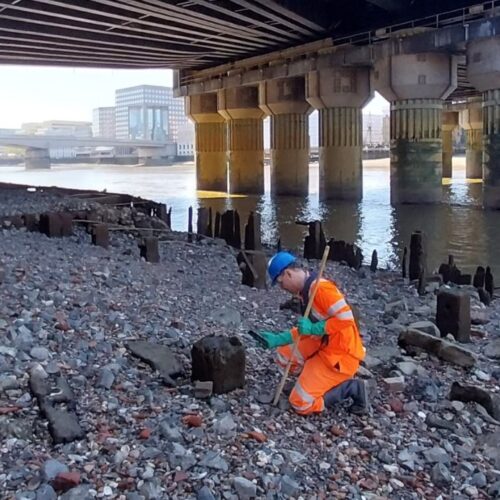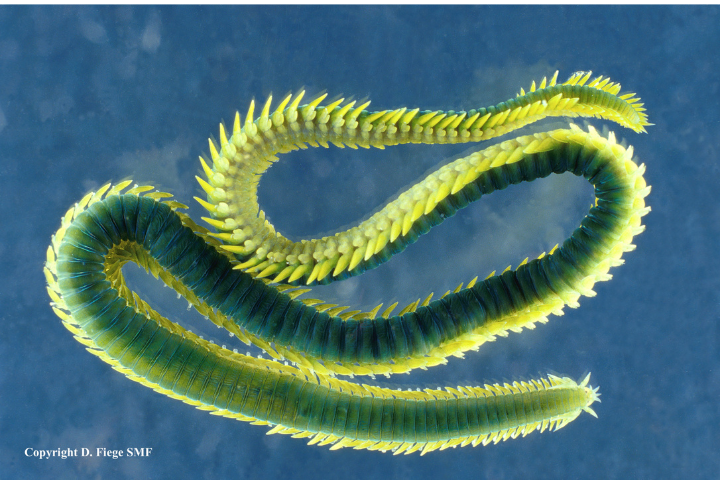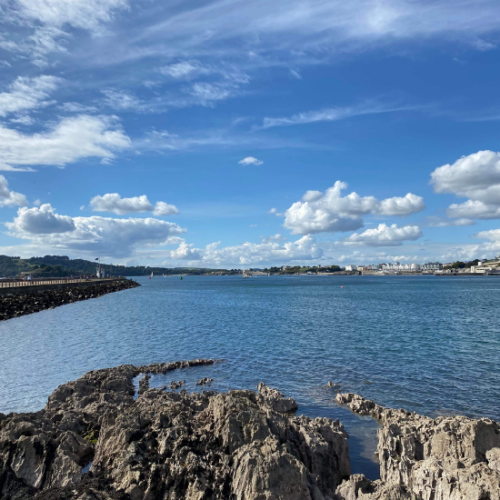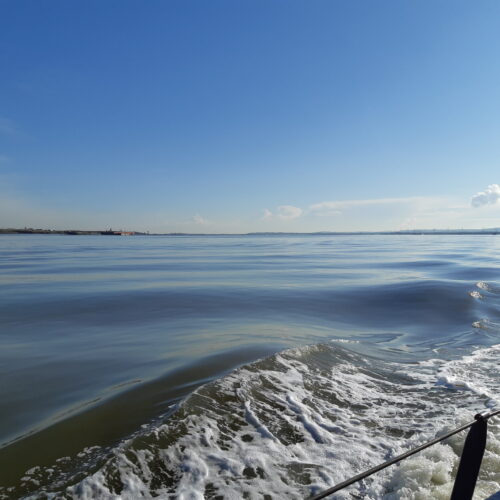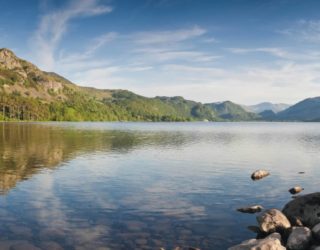Fish farms are now commonplace on coastlines around the world, particularly in Norway, Chile and Scotland, reducing pressure on wild stocks, but bringing with them their own complications [1].
Sea lice are one of the most prevalent issues affecting production in fish farms. These copepod crustaceans have been around for millions of years and have adapted to parasitise fish. They are ectoparasites, latching on to the outside of their hosts, where they feed off the fish’s mucus, skin or blood. Different species of sea lice have adapted to live on different types of fish, such as Lepeophtheirus salmonis, one of the most common sea lice infesting commercial species, which lives on Atlantic salmon (Salmo salar) and their relatives [2].
Sea lice occur naturally in the wild, but rarely do they cause mass mortality. When they enter captive fish nets, however, many fish living in close quarters means the infestation can spread more easily than in the wild. Too many sea lice on an individual fish can cause physical damage and stress, stunting their growth and, in the worst cases, death [3]. Infestations in salmon farms also pose a risk to wild populations, as sea lice can transfer from captive fish to the wild fish swimming by as they migrate between salt water and fresh water to breed [2][3].
Sea lice are not harmful to humans, but besides causing damage and stress to the fish, lesions caused by even a minor infestation can make the catch, reared or wild, unmarketable. Regulations limit the number of lice on average per fish in farms which, if exceeded, could result in legal action if discovered on inspection [4]. These factors have led to the production of many lice reducing or eliminating measures to decrease the spread and effect of these ectoparasites.
Over the years, various chemicals have been used to control sea lice numbers but lice are becoming increasingly resistant to these forms of treatment and, when these chemicals are released into the environment, there can be harmful effects on non-target species [5].
A common method of control, which avoids these issues, is to cultivate different species of fish alongside the farmed fish to act as cleaners, eating the lice right off their backs [6]. Examples of this are lumpfish/lumpsuckers (Cyclopterus lumpus) and members of the wrasse family. Wrasse tend to become inactive in cold water, not feeding below 6°C, making them less effective in areas such as Scotland [7]. This has prompted more interest in lumpsuckers, which continue feeding down to 4°C. An additional advantage of lumpsuckers is that they can be grown to a size suitable for deployment into fish farms in as little as four months, while wrasse can require one-and-a-half years to be ready for deployment [6]. However, cleaner fish tend to only eat parasites at the later stages of the parasite’s lifecycle, meaning they are an effective method of continuous delousing for an enclosure that is already infected, but not as the first response in preventing the spread. In addition, there are concerns over the welfare of the cleaner fish and that they may act as a vector for transmitting disease [8].
Recent innovation has produced new technological methods for controlling sea lice. For example, thermal treatment via a vessel that pumps salmon through heated water makes the lice let go of the fish during passage. Another technological method is ‘stingray’ system which uses a short laser pulse to kill lice without harming the fish [5]. However, these can both be expensive methods of reduction and do not eliminate the problem entirely [3][5].
Of course, the safest solution would be to prevent infestation in the first place. A recent preventative method is the ‘snorkel sea cage’ or ‘snorkel net’ enclosure, which works by keeping the fish deeper in the water. This lessens the opportunity for infestation as sea lice larvae are mostly found near the surface. It is not possible to keep the fish permanently submerged, as they must go to the surface to re-fill their open swim bladder to maintain buoyancy by gulping in air, which they can do by swimming up the ‘snorkel’; a tube which is impermeable to lice. Fish kept in these snorkel sea cages have been found to have snout damage, presumably from damaging themselves against the snorkel tube, and there are possibly other negative effects on their welfare from limited access to surface waters [8]. Also, the effectiveness of a snorkel sea cage decreases when there is a dynamic salinity gradient, which means that sea lice can be found in deeper water [9].
Another preventative measure could be to take fish farms away from the wild populations that are the most likely source of lice by putting them into land-based enclosures with Recirculating Aquaculture Systems, which use a series of filtrations to remove waste and detoxify the water. But this is an expensive alternative, requiring significant space, and one which many fisheries will be apprehensive to make [4].
Long term, it may be possible to develop a vaccine against sea lice, or to selectively breed fish for sea lice resistance. However, both options are many years from commercial application. Additionally, selective breeding brings with it the complication of ensuring genetic diversity is not compromised, which could enable disease to ravage populations in one fell swoop [10].
Although sea lice continue to cause problems, modern advances have already made great strides in controlling these parasites in aquaculture. Continued research and development will undoubtedly bring us closer to balancing the issues sea lice and their treatments cause. So, we look to the future for a sustainable, economical, and ecologically friendly method to keeping these fish, the fisheries, and the communities they support, alive and healthy.
Get in touch
If you’ve found this article useful for one of your projects or would like further information, please get in touch.
[1] Vollset, K.W., Dohoo, I., Karlsen, Ø., Halttunen, E., Kvamme, B.O., Finstad, B., Wennevik, V., Diserud, O.H., Bateman, A., Friedland, K.D., Mahlum, S., Jørgensen, C., Qviller, L., Krkošek, M., Åtland, Å., Barlaup, B.T. (2018). Disentangling the role of sea lice on the marine survival of Atlantic salmon. ICES Journal of Marine Science, 75 (1), pp. 50-60.
[2] Abolofia, J., Asche, F., Wilen, J.E. (2018). The Cost of Lice: Quantifying the Impacts of Parasitic Sea Lice on Farmed Salmon. University of Chicago Press, 32 (3).
[3] Nilsen, A., Nielsen, K.V., Biering, E. and Bergheim, A. (2017). Effective protection against sea lice during the production of Atlantic salmon in floating enclosures. Aquaculture, 466, pp.41-50.
[4] Marine Scotland. (2020). The regulation of Sea lice in Scotland. Topic sheet number 71, V3.
[5] Andrews, S. (2016) Controlling the uncontrollable? Sea lice in salmon aquaculture. Sustainable Foot Trust.
[6] Powell, A., Treasurer, J.W., Pooley, C.L., Keay, A.J., Lloyd, R., Imsland, A.J., Garcia de Leaniz, C. (2018). Use of Lumpfish for sea-lice control in salmon farming: Challenges and opportunities. Reviews in aquaculture, 10 (3), pp. 683-702.
[7] Treasurer, J.W. (2002). A review of potential pathogens of sea lice and the application of cleaner fish in biological control. Pest Management Science, 58, pp. 546-558.
[8] Stein, L. H., Dempster, T., Bui, S., Glaropoulos, A., Fosseidenden, J. E., Wright, D. W., Oppedal, F. (2016). ‘Snorkel’ sea lice barrier technology reduces sea lice loads on harvest-sized Atlantic salmon with minimal welfare impacts. Aquaculture, 458, pp. 29-37.
[9] Geitung, L., Oppedal, F., Stien, L.H., Dempster, T., Karlsbakk, E., Nola, V., Wright, D.W. (2019). Snorkel sea-cage technology decreases salmon louse infestation by 75% in a full-cycle commercial test. International journal for parasitology, 49 (11), pp. 843-846.
[10] Gharbi, K., Matthews, L., Bron, J., Roberts, R., Tinch, A., Stear, M. (2015). The control of sea lice in Atlantic salmon by selective breeding. Journal of the Royal Society Interface, 12 (110), p20150574.


